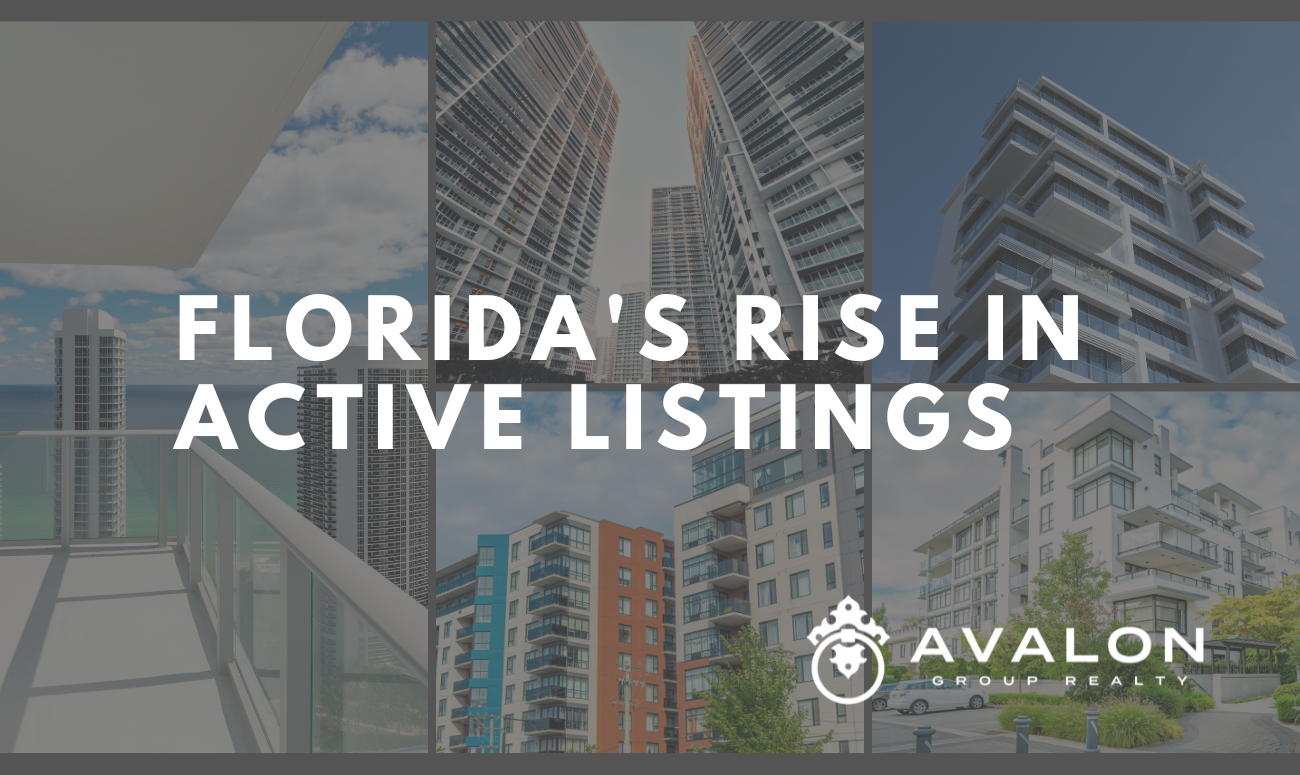Florida’s Rise in Active Listings: The Sunshine State’s Housing Woes
The housing market in Florida is not mirroring national trends. While the rest of the country experiences stabilization, the Sunshine State lags behind. Moreover, one major factor contributing to this divergence is the Condo Crisis.
Florida’s Rise in Active Listings: Florida’s Unique Condo Challenges
The increasing costs associated with condominium ownership are significantly impacting the market dynamics. Primarily, the surge in homeowners’ association (HOA) fees follows the Surfside tragedy of 2021, where new regulations necessitate regular safety assessments and heightened maintenance funds. Consequently, condo owners are burdened with substantially higher monthly dues compared to pre-pandemic levels, adding financial strain.
Moreover, the escalating premiums for home insurance further compound the affordability crisis facing Florida condos. The state’s susceptibility to frequent natural disasters has prompted some insurers to withdraw entirely, leaving homeowners to grapple with the nation’s highest insurance costs, nearly triple the national average. Consequently, this additional expense diminishes the attractiveness of condo ownership for prospective buyers, creating further hurdles in the market.
Florida’s Rise in Active Listings: Regional Spotlight: The Tampa-St. Pete Disparity
Florida’s Rise in Active Listings: The National Housing Landscape
In contrast, the latest data reveals the national housing market is stabilizing. First of all, active listings rose just 0.8% from January-February on a seasonally adjusted basis. Secondly, new listings climbed 3.8% month-over-month – the largest gain since September 2022. Similarly, the US median home price increased a modest 6.6% annually to $412,778 in February.
Moreover, condo trends nationwide diverge sharply from Florida’s turmoil. Conversely, US condo prices surged 8.4% year-over-year in January while sales held steady. Thus, Florida’s plunging prices and sales represent an outlier amidst broader market normalization.
Florida’s Rise in Active Listings: Causes of Florida’s Condo Woes
Florida’s Rise in Active Listings: Impacts and Future Outlook
The condo crisis in Florida reverberates across the housing ecosystem, yielding far-reaching ramifications. Primarily, the risk of collapsing property valuations looms large, potentially destabilizing banks’ mortgage portfolios should owners default on their payments. Concurrently, the dwindling demand forecasts a slowdown in construction activity, leading to potential job losses in related industries.
Moreover, the inundation of inventory may initiate a self-perpetuating pricing cycle. As more sellers lower their asking prices in response to market pressures, prospective buyers may adopt a cautious “wait-and-see” approach, anticipating further declines. Consequently, the downward spiral of the market can drag surrounding neighborhoods into its vortex.
On the flip side, some analysts posit that the crisis may signify a necessary correction from an era of oversaturated construction. Alternatively, there’s speculation that buyers could regain confidence once property prices stabilize at a more appealing equilibrium point. However, the future remains uncertain, with mounting costs adding to the complexity of the situation.
Florida’s Rise in Active Listings: Potential Solutions and Oversight
Nonetheless, policymakers could potentially mitigate the downturn through proactive measures. Firstly, mandating more affordable housing construction could relieve inventory shortages. Additionally, temporary tax abatements or developer incentives could stimulate new projects.
Moreover, increased regulatory oversight over HOAs and insurance firms could curb exorbitant fee hikes. While ensuring resident safety remains paramount, more balanced policies may stabilize operating costs. Finally, government-backed insurance programs could provide an affordable coverage alternative.
In summary, Florida’s divergence from national real estate trends stems largely from the state’s uniquely challenging condo predicament. Consequently, the Tampa-St. Petersburg area manifests many of these patterns through plummeting sales, spiking inventory, and depressed prices. Unless stakeholders intervene through policy reforms or market forces self-correct, the crisis may deepen and destabilize Florida’s housing foundations.
Florida’s Rise in Active Listings: The Ripple Effects on Florida’s Economy
While the condo crisis directly impacts homebuyers and sellers, its repercussions extend far beyond just the housing market. Indeed, Florida’s economy and job market could face severe headwinds if this downturn intensifies.
Construction Industry Exposure
Firstly, the state’s construction industry faces an existential threat from the condo slump. Undeniably, new condo development comprises a significant portion of Florida’s residential construction activity. Therefore, collapsing pre-construction condo sales equate to canceled or indefinitely postponed projects.
Furthermore, the pipeline for future projects appears bleak amidst crumbling buyer demand. Consequently, thousands of skilled construction jobs potentially hang in the balance. Likewise, ancillary businesses like building materials suppliers also feel the pinch from reduced workloads.
However, the crisis extends beyond just new development disruptions. Likewise, owners of existing condos may defer non-essential renovation work given financial pressures. Simultaneously, homeowners could suspend repair plans due to skyrocketing contractor costs. Ultimately, such trends exacerbate job losses throughout Florida’s construction sector.
Florida’s Rise in Active Listings: Banking
Banking System Risks
Additionally, Florida’s banking industry bears significant exposure to soured mortgages and foreclosures. Specifically, collapsing condo values undermine the collateral backing countless home loans. Moreover, owners may face a perverse incentive to strategically default if properties become severely underwater.
Furthermore, most experts anticipate Florida will bear the brunt of climate-induced property devaluations nationally. Indeed, compound risks like flooding and hurricanes render many locations uninsurable or prohibitively expensive to fortify. Therefore, imperiled housing values portend systemic risks that could cascade across lenders’ balance sheets.
Secondly, depleted property tax revenues due to devaluations restrict municipal budgets and services. Consequently, cities may slash funding for schools, infrastructure and public safety – ultimately depressing living standards. This vicious cycle accelerates middle-class household departures and brain drain, exacerbating the fiscal crunch.
Florida’s Rise in Active Listings: Conclusion
Reverberations Throughout Florida’s Services Economy Moreover, housing submarkets seldom exist in a vacuum – their downturns inflict shockwaves across ancillary businesses and sectors. For example, as disposable incomes dwindle amidst mortgage stresses, less patronage benefits restaurants, retailers and recreational venues.
Equally importantly, real estate professionals like agents, loan officers and attorneys endure income compressions during severe slumps. Therefore, these high-earning cohorts contribute less spending power, producing ripple effects throughout the state’s services sector.
Likewise, each foreclosure or distressed sale prevents that household from maximizing its economic potential. Instead of investing in education, healthcare and productivity-enhancing purchases, those resources simply evaporate. Cumulatively, these drains on consumer demand suppresses small business activity and job creation.
To summize, while Florida’s condo downturn originated from affordability challenges, its consequences could reverberate far wider. Indeed, the crisis poses systemic risks that threaten key pillars of the state’s real estate, banking, construction and services industries if left unresolved. Therefore, a multifaceted policy response may prove necessary to stave off a protracted statewide recession.
If you are looking for a St Petersburg Realtor visit https://avalongrouptampabay.com/




